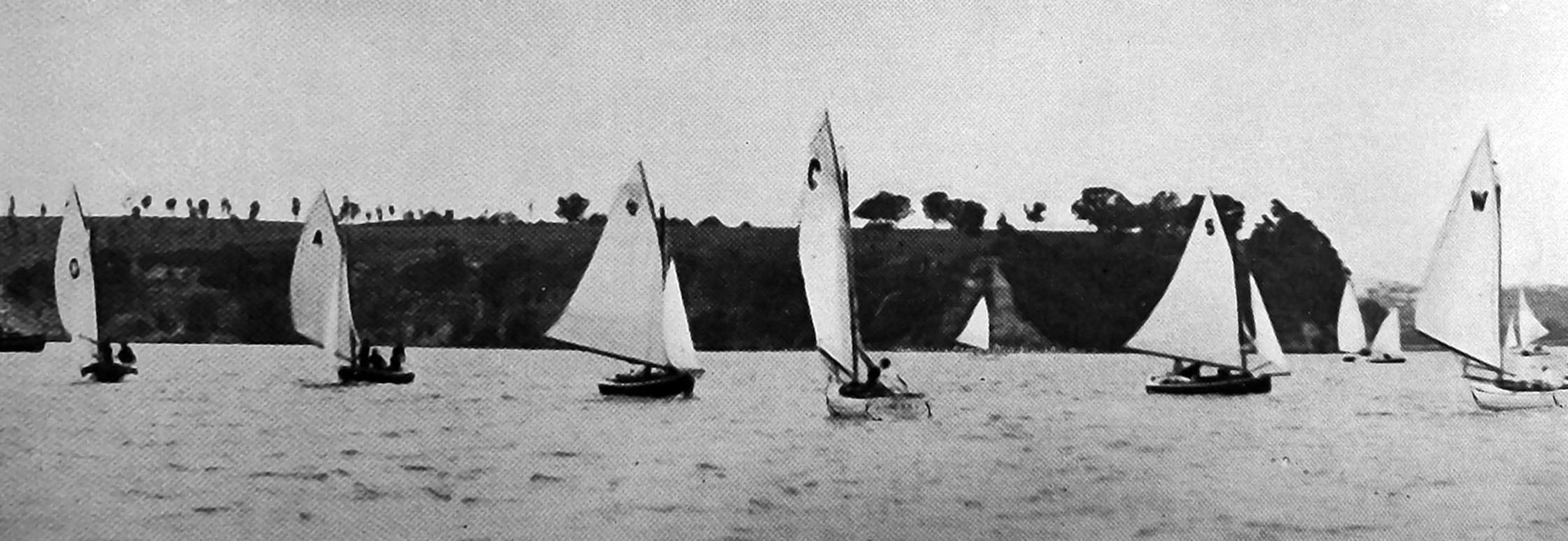The 1925 Sanders Cup contests will be generally voted by yachtsmen as the most exciting of the series of races between the 14-footers yet held in the dominion. No more thrilling race could have been witnessed than the one which was sailed on the second day of the contest when Iona sailed under the lee of Queen March, made her sensational beat out to windward, and led the Auckland boat home by 32 seconds. This race alone was well worth the journey from Dunedin to Auckland to witness, and the thrill experienced by the thousands who witnessed such a brilliant feat of sailing will not likely readily be forgotten. It was a true test of the sailing equalities of two champions, a test which proved that the Otago boat was the faster of the two. Why and how Iona demonstrated her superiority are questions which are not very hard to settle. The Otago boat was equipped with Kia Ora’s mainsail throughout the contest. This sail is of exceptionally light material; in fact, it is one of the lightest sails ever imported, and it was freely stated that it was the best-setting mainsail ever seen on Auckland Harbour. Perhaps the mainsail had a great deal to do with Iona’s line pointing. She sailed closer to the wind in Auckland than she ever did on Otago Harbour. Another factor in her favour was that she carried such a well-balanced crew, and the last, but most important, factor was that a master mind and a master hand had the tiller. Otago yachtsmen well know Mr Alf Wiseman’s ability on the water. Auckland yachtsmen readily admit that Mr Wiseman is one of the most expert yachtsmen who ever sailed on the Waitemata. Murihiku, the second boat in the contest, pat up a very fine performance. — by ‘Rudder’
Polio epidemic reaches South
Dr J.H. Crawshaw (District Medical Officer of Health), who returned from Riverton last night, informed a Daily Times reporter that the case he had been investigating had proved to be a definite case of infantile paralysis. The sufferer is a boy aged two years residing with his people at Longwood, a sawmilling town near Riverton. The suspected case of the girl from Mornington who was admitted to the Hospital on Monday was still under observation. The boy aged 11 years who was admitted to the Hospital from Bay View road on Monday suffering from the disease is still very ill. There have been ready volunteers coming forward to offer blood, and up to the present six have signified their willingness to give blood for transfusion to sufferers from the malady.
Travel price war over
For a while past the Aard Company and the Mount Cook Motor Co have cut the passenger rates for the trip from Queenstown to Wanaka and back, and many persons have made the trip at 10 shillings. On Sunday night last a party booked for Wednesday, but, hearing that the two companies had come to some agreement, they went on Monday night to the office at which they had booked, and were told that the fare had been raised to £1 15s.
Transalpine route up to date
Next Sunday the final section of the automatic signalling system between Moana and Stillwater will be brought into operation, completing the single line section from Rolleston to Stillwater, 118 miles, excluding the tunnel. This is the longest section of single line automatic signalling outside America. It is a three-position colour-light type with electric interlocking at intervals. — ODT, 19.2.1925
Compiled by Peter Dowden













